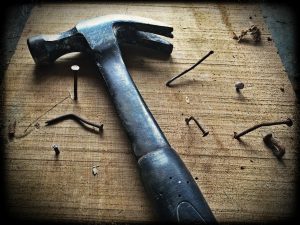Suffered From Effects Of Defective Building Work in QLD?
You can sue for consequential damage.
This article aims to provide general guidelines for consumers in relation to their defective building work and to shed light on the circumstances scenario where a cause of action may be available to claim consequential damage from the contractor who attended to the work. The guidelines are not meant to be a substitute for legal advice and may not apply to individual circumstances. Please, call our office and discuss your individual case.
 The Queensland Building and Construction Commission (QBCC) has been empowered by s 72 of the Queensland Building and Construction Commission Act 1991 (the Act) to direct a contractor, whether licensed or unlicensed, to rectify building work that is either defective or incomplete or to remedy consequential damage caused by or as a consequence of carrying out building work. The direction is commonly referred to as a direction to rectify (DTR).
The Queensland Building and Construction Commission (QBCC) has been empowered by s 72 of the Queensland Building and Construction Commission Act 1991 (the Act) to direct a contractor, whether licensed or unlicensed, to rectify building work that is either defective or incomplete or to remedy consequential damage caused by or as a consequence of carrying out building work. The direction is commonly referred to as a direction to rectify (DTR).
What is consequential damage?
Consequential damage at law refers to indirect damages or losses not flowing immediately from an act, but rather from the consequences of the act. For instance, loss of business as a result of a fire. In Queensland and in the context of s 71H of the Act, consequential damage is a damage
- Caused by, or as a consequence of, carrying out building work at a building site (the relevant site), regardless of any intention, negligence, or recklessness of the person carrying out the work; and
- To a residential property at the relevant site, containing the relevant site or adjacent to the relevant site.
What is building work?
The legislative definition of building work includes —
- Any work personally carried out whether directly or indirectly;
- Providing administration, advisor, management or supervisory services for building work, including:
- Entering into a contract or submitting a tender for building work;
- Offering (quoting and tendering) to carry out building work;
- Taking payment or arranging payment of subcontractors;
- Arranging labor or arranging and conducting on-site meetings and inspections;
- Preparing plans and specification;
- Coordinating the scheduling of work for building contractors even as an agent for another person;
- Obtaining engineering or soil reports, or arranging for certificates from local government to be issued, etc;
- Supervising building work;
- Providing advice or a report for a building;
- Contracting for work as a subcontractor to a builder.
What is defective work?
The QBCC Act describes defective building work to include work that is faulty or unsatisfactory. The words faulty and unsatisfactory are to be given their ordinary and natural meaning. In considering whether the work is defective or not, the following may be called in assistance. Any building work which has the characteristics of the following may be considered defective work—
- The work does not comply with the Building Act 1975, Building Code of Australia or an applicable Australian Standard; and
- The work involves the use of a manufactured product, and that product has been used, constructed, or installed in a way that does not comply with the product manufacturer’s instructions.
In Gemini Homes (QLD) Pty Ltd v QBCC [2014] QCAT 481. The Tribunal opined that—
“… The QBCC is not required to identify a non-compliance with the Building Act 1975, National Construction Code or manufacturer’s instruction, in establishing that the building work is defective. Where defects are evident, yet the cause is unclear, the building work may be determined to be defective and may be the subject of a DTR.”
Where to lodge a complaint about defective and incomplete work?
For information in relation to lodging a complaint with the QBCC for defective or incomplete work, please visit the QBCC website via the following link:
http://www.qbcc.qld.gov.au/building-complaints/complaints-about-defective-building-work
What obligations do I have prior to lodging a complaint?
You need to lodge your complaint as soon as possible. The following timeframe must be adhered to:
- A claim under the Queensland Home Warranty Scheme for structural defects must be made within 3 months of noticing the defect;
- A claim under the Queensland Home Warranty Scheme for non-structural defects must be made within 7 months of the completion of the work (and the non-structural defect must have come to light within 6 months of substantial completion); and
- A request for DTR should be made within 12 months of becoming aware of the defects/incomplete work or consequential damage.
What are structural defects examples?
- Leaking roof;
- Leaking shower to internal walls; and
- Major cracking of walls.
What are non-structural defects examples?
- Chipped internal paintwork;
- Sticking drawers; and
- Minor cracking of plasterboard.
Legal Help.
Aylward Game Solicitors have assisted a number of clients in relation to building defect cases that include mediation to resolution and litigation as possible pathways. We look forward to discussing your options and protecting your rights. Our experienced team can be reached on 1800 217 217.
Article Source: Defective Building Work

No comments:
Post a Comment